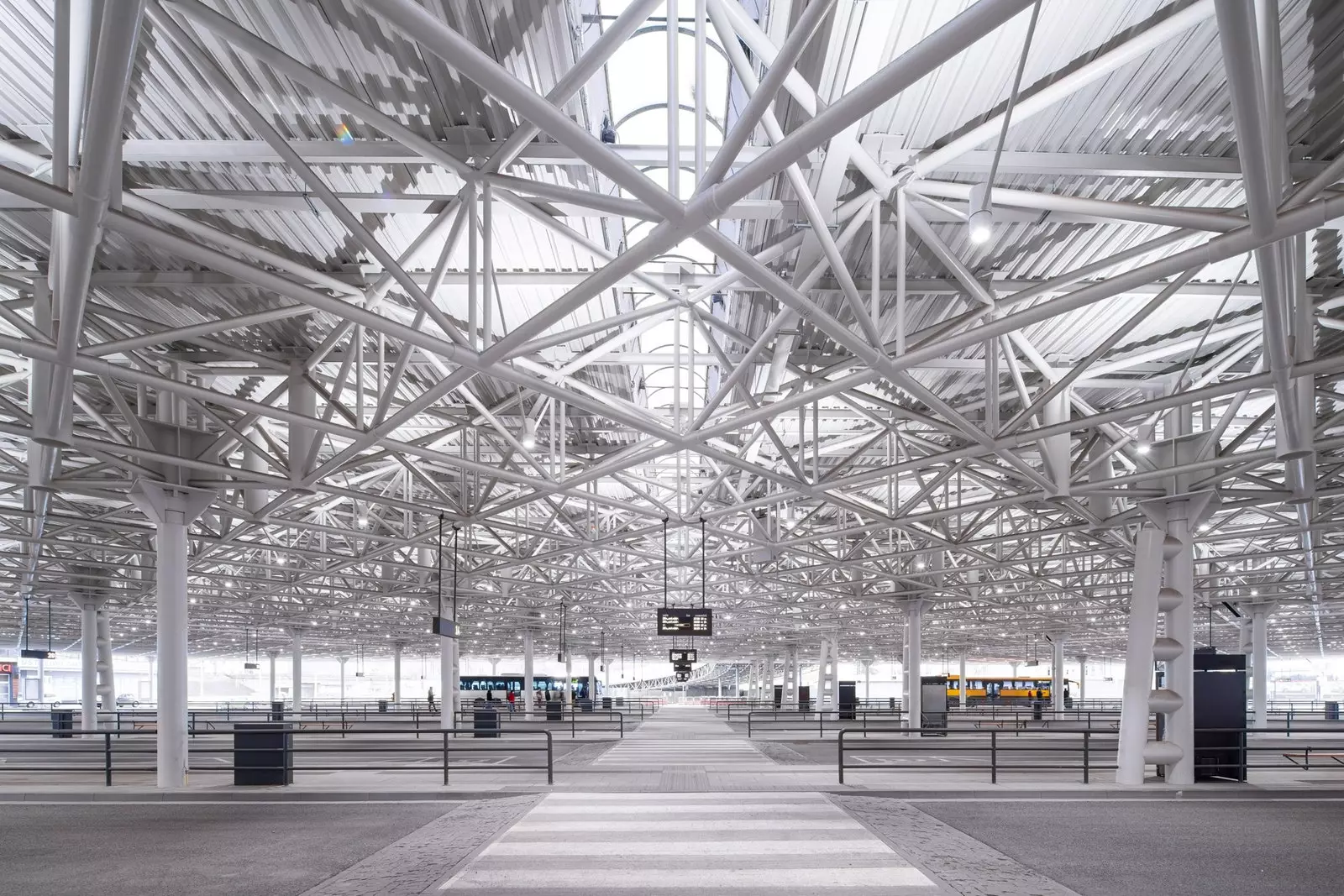
The station welcomes 17,000 passengers every day
preserve the brutalist architectural heritage and, at the same time, advocating for a positive social change, were the two basic pillars of the project of the Zvonarka bus terminal, located in the Czech city of Brno.
The residence plans of this construction started in 2011 , the year in which the CHYBIK + KRISTOF architects began to analyze the original identity of the building -composed of a steel frame and a concrete deck.
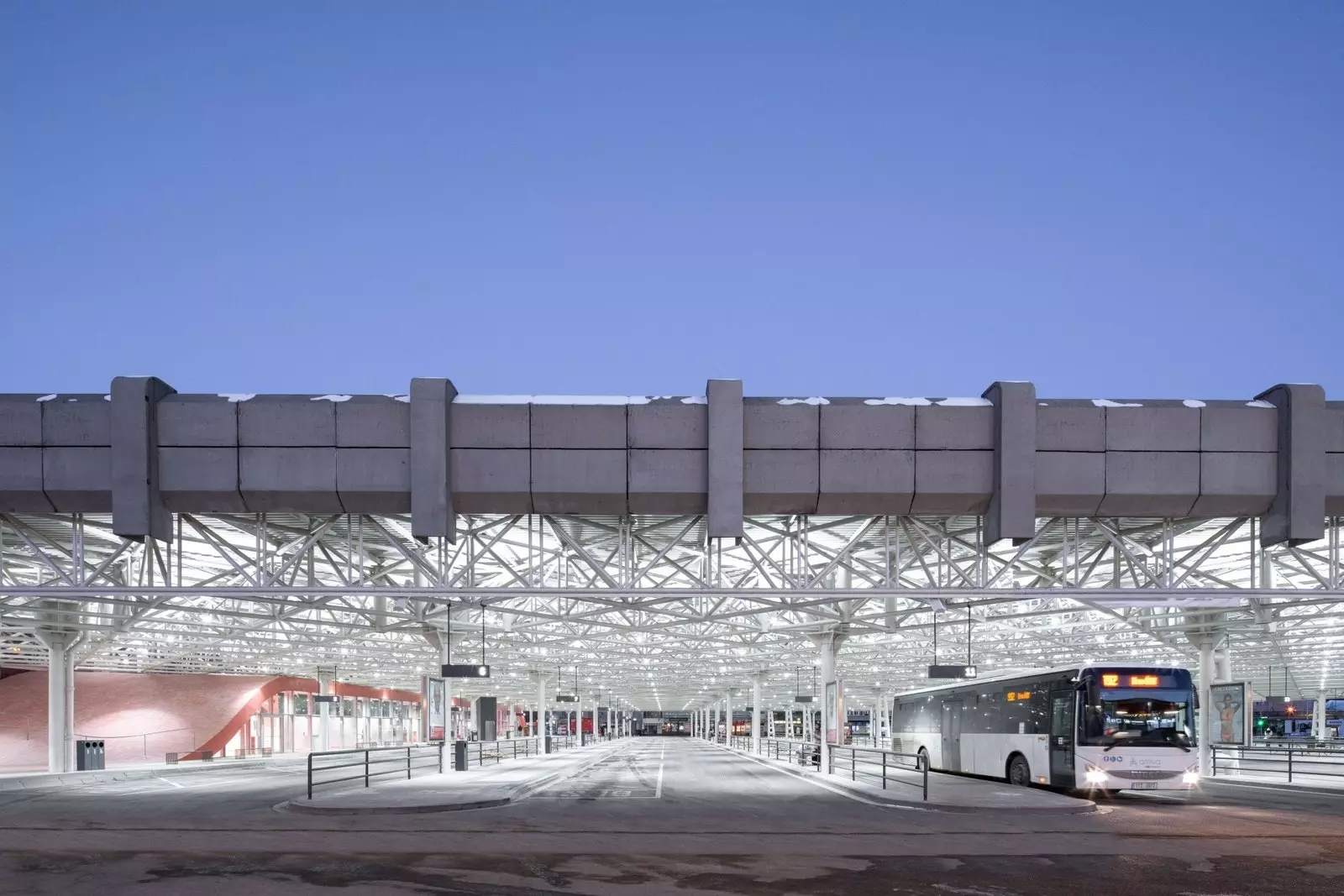
The building was built in 1988
East 2021, ten years later , the architects present the transportation hub and public space restored. The result of the meticulous process reflects the deep social awareness of CHYBIK + KRISTOF when conceiving their projects.
As with other architectural gems of international renown, see the Hotel Praha and Transgas -both in Prague-, the Zvonarka Central Bus Terminal in Brno, built in 1988 , has long been considered one of the most notable examples of the brutalist current of the Czech Republic.
In 1989, the building was privatized, with only the first phases of construction completed, and resumed its function as a bus station. Recognizing their value, their high maintenance costs caused him to remain active for a short time, which led to his progressive deterioration.
And how, without a doubt, Zvonarka station plays a central role in the socio-cultural fabric of the region in which it stands, which is why it was decisive to rethink the use of this declining transport hub and adapt it to current needs.
"Demolitions are a global problem" explains co-founding architect Michal Kristof.
"Our role as architects is to participate in these conversations and show that we no longer operate from a blank page. We have to consider and also work from existing architecture , and gradually shift the conversation from creation to transformation," he says.
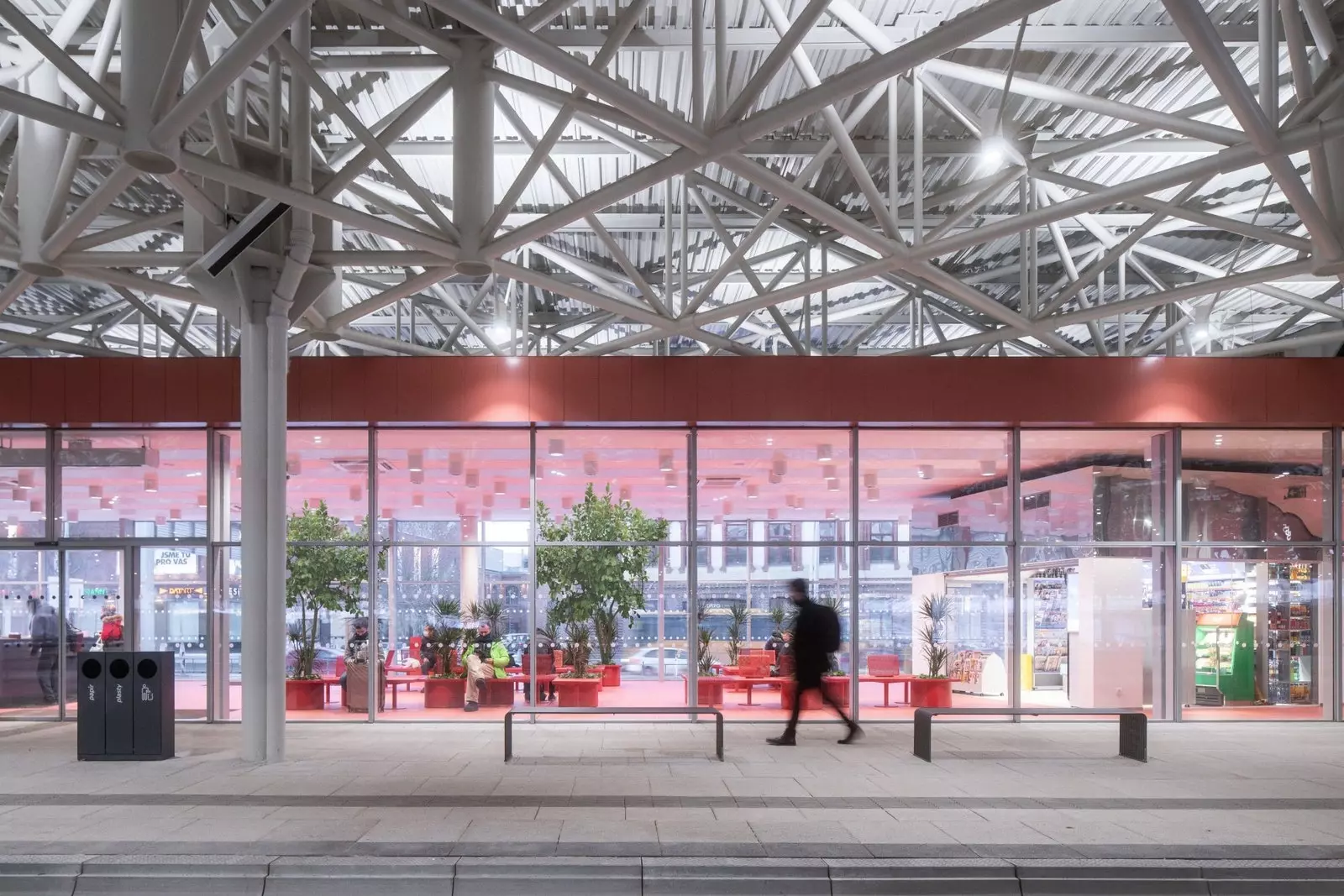
Its original architect was Radúz Russ
Adopting a holistic socio-cultural and technical approach, the architecture studio has devised a conscious space focused on the traveler, through which more than 820 regional connections, national and international and 17,000 passengers every day.
paying homage to its original architect, Radúz Russ , have highlighted the characteristic brutalist elements of the station, contrasting its angularity with an organic wave that reflects the continuous flow of vehicles and passengers.
To open the terminal to the city, the architects have removed temporary structures added in the 1990s and they have created a second entrance at street level.
With a gabled roof, the interior space houses the individual bus stops , while the outside serves as parking for vehicles.
On the other hand, structural transparency defines the design: the walls have been removed, favoring the entry of light. In turn, following the original square plan, the main hall has been reconfigured as an open structure.
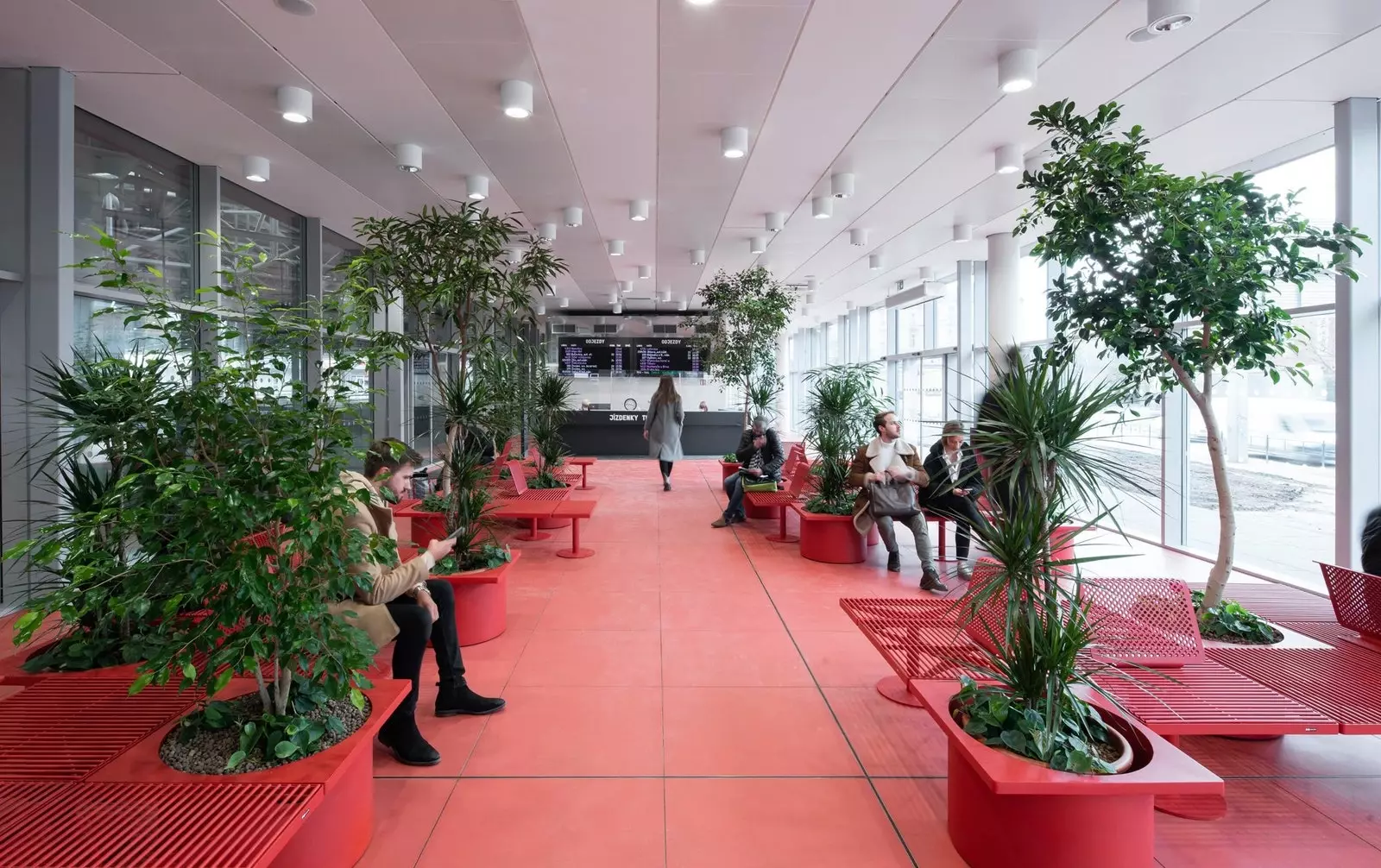
The interior design has been renewed
A new information office, ticketing and waiting areas, platforms and a wayfinding system accessible for the disabled complete the dynamic project of CHYBIK + KRISTOF.
"The role of the architect begins before the first sketches. Fully understand the social dynamics that comes into play in every project is the foundation of our practice," says co-founder Ondrej Chybik.
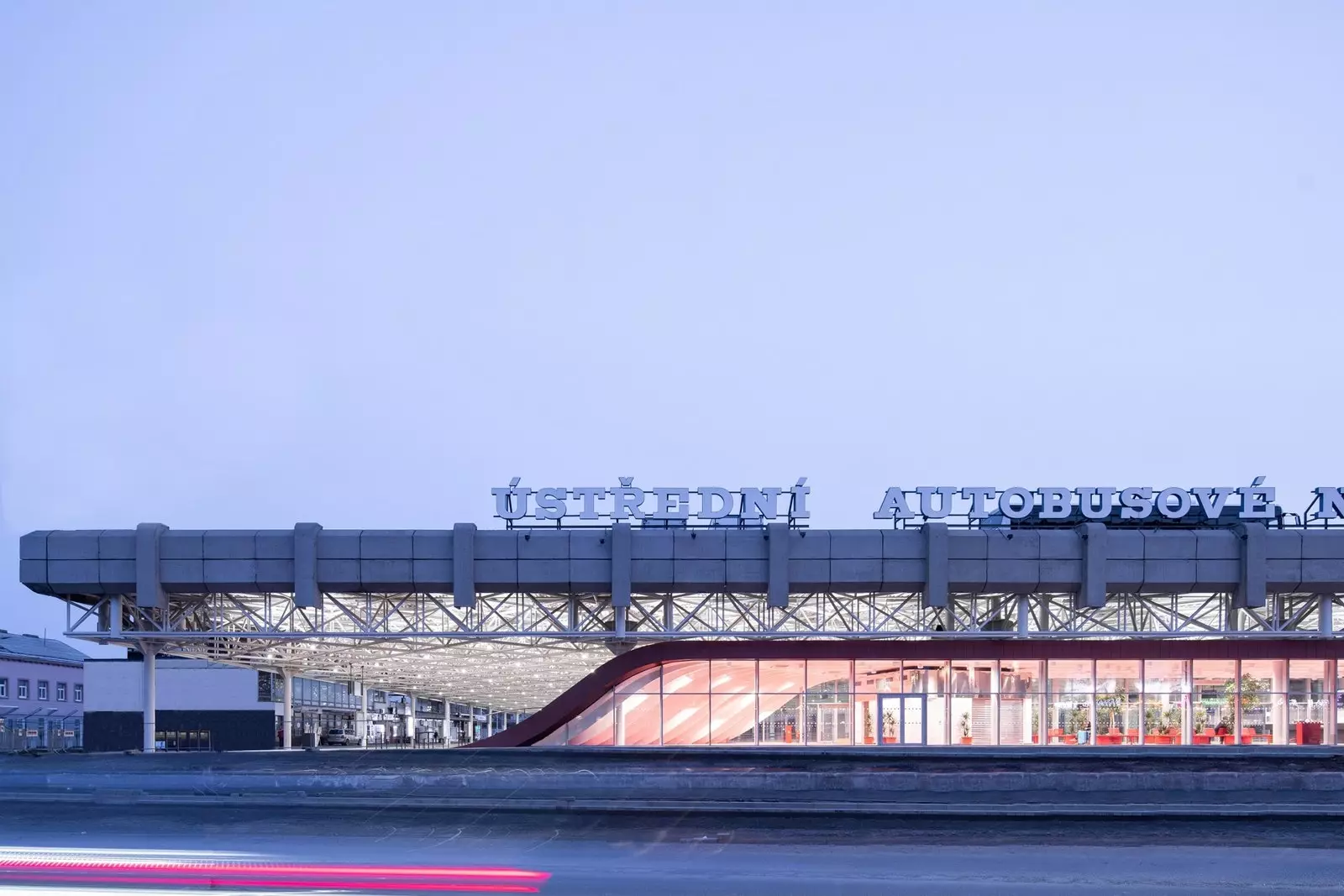
A second entrance has been created at street level
"Bearing this in mind, architects assume a crucial role both in the beginning and in the materialization of a project: we are here at the beginning, in the middle and at the end. Establish a dialogue; resolve existing shortcomings -social, economic, cultural and profoundly political-; bring innovative and inclusive solutions: it is our responsibility to get out of our studios and out into the streets", he adds.
"To the review the past , commit to the present and project into the future, architects can, and must, be catalysts for change , conclude Ondrej Chybik and Michal Kristof.
